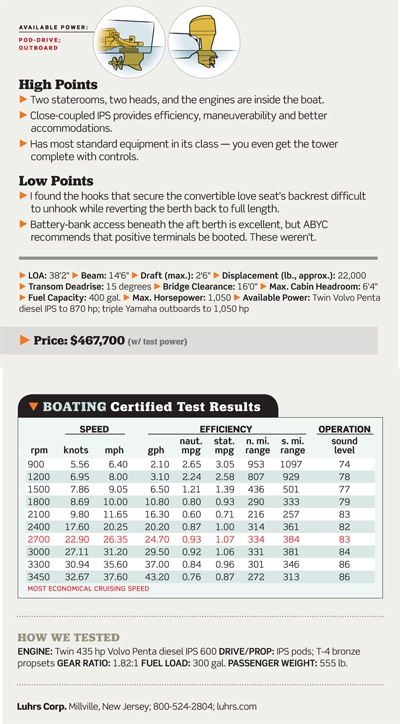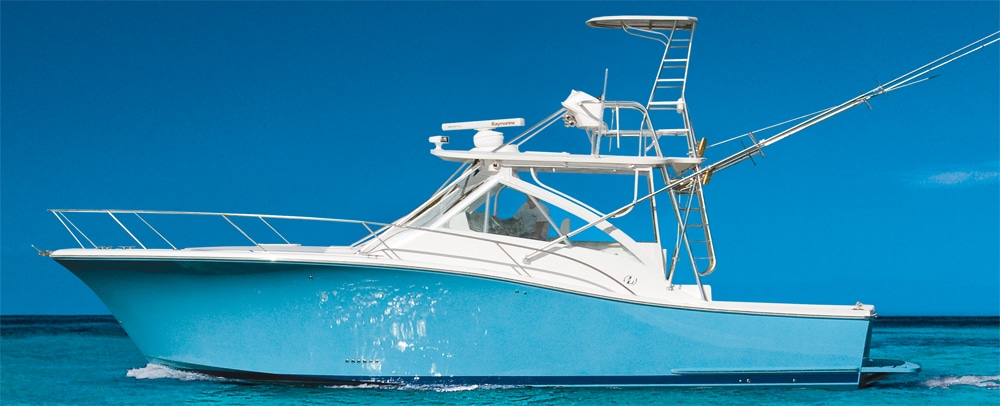
Luhrs 37 Canyon IPS
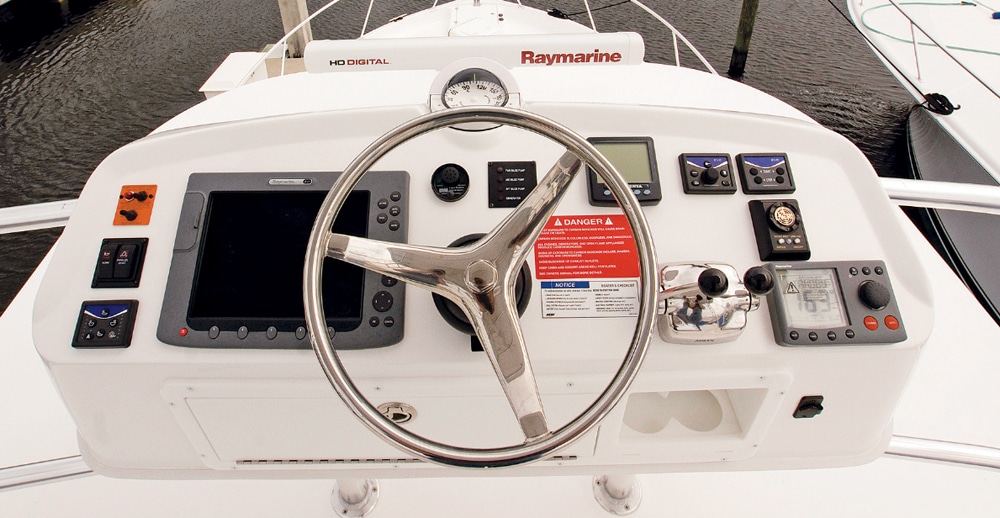
Luhrs 37 Canyon IPS
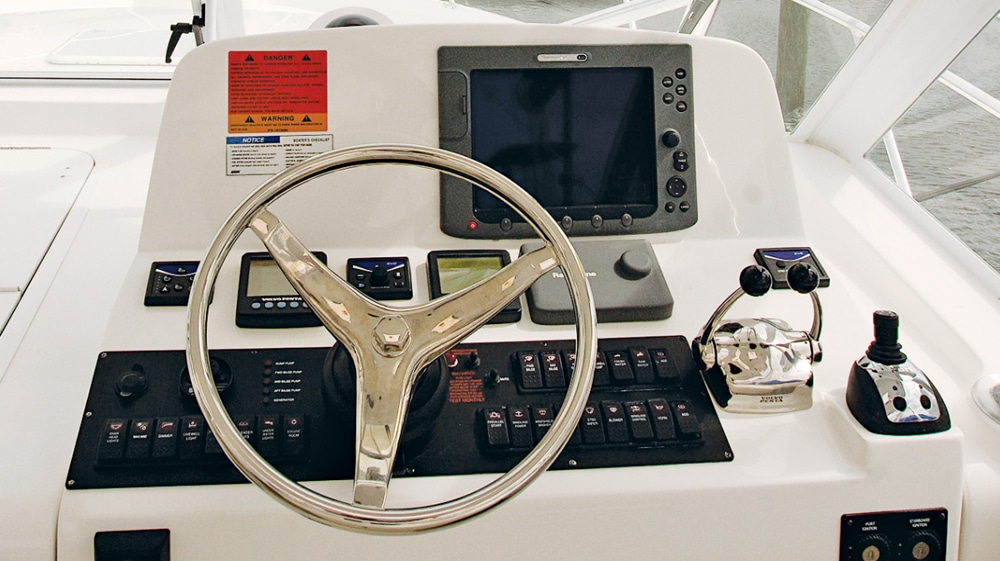
Luhrs 37 Canyon IPS
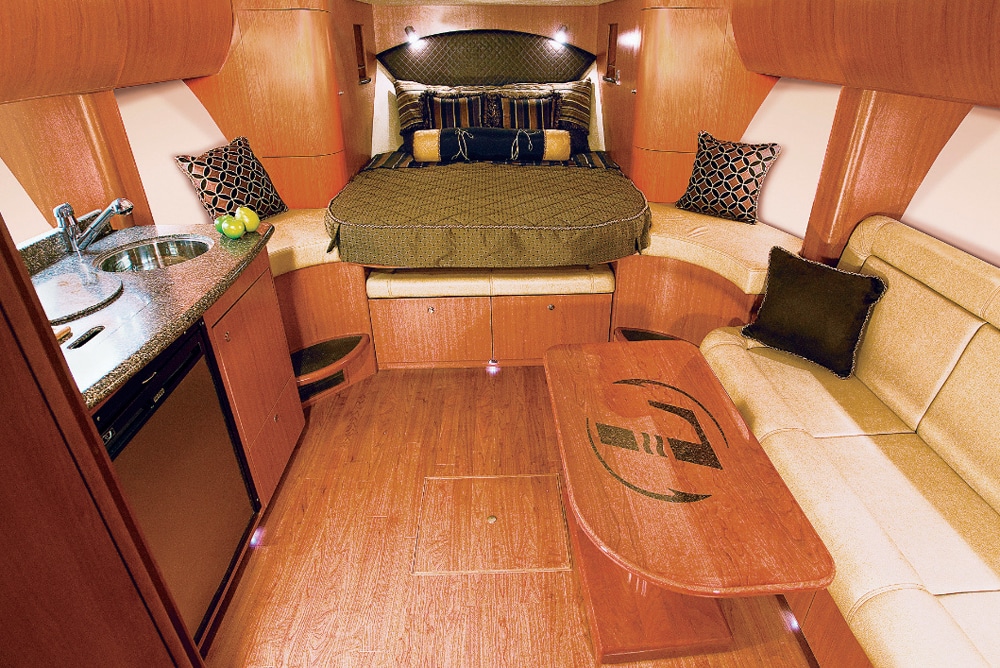
Luhrs 37 Canyon IPS
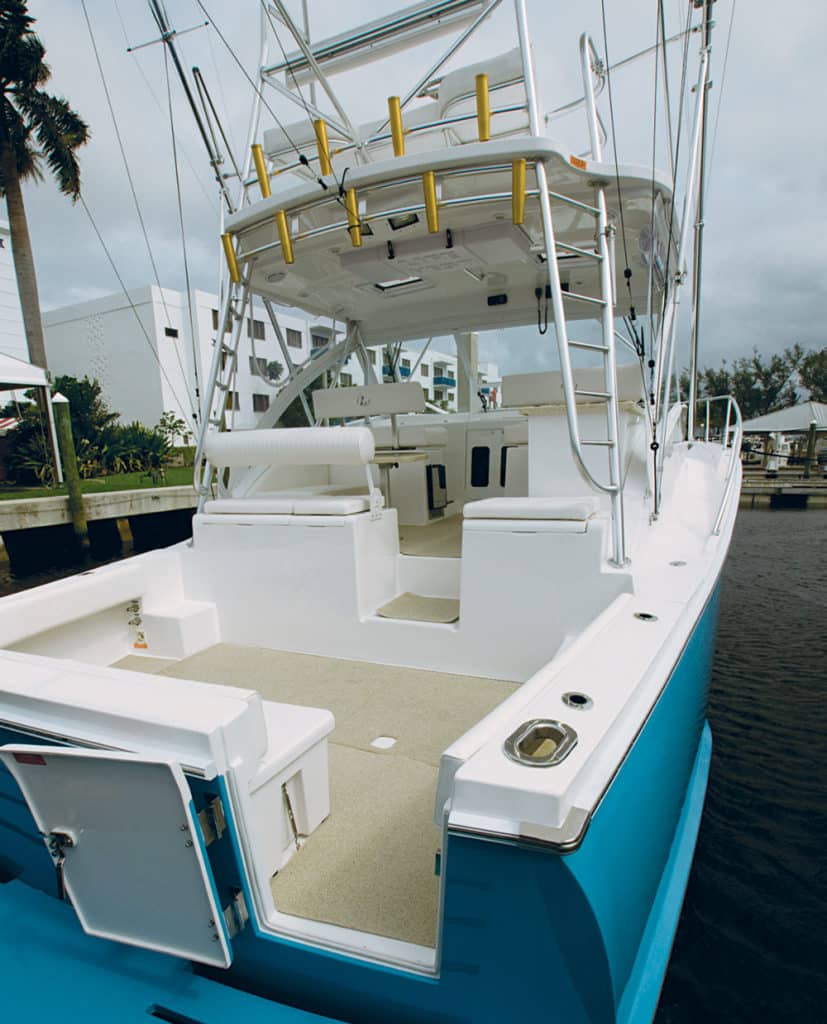
Luhrs 37 Canyon IPS
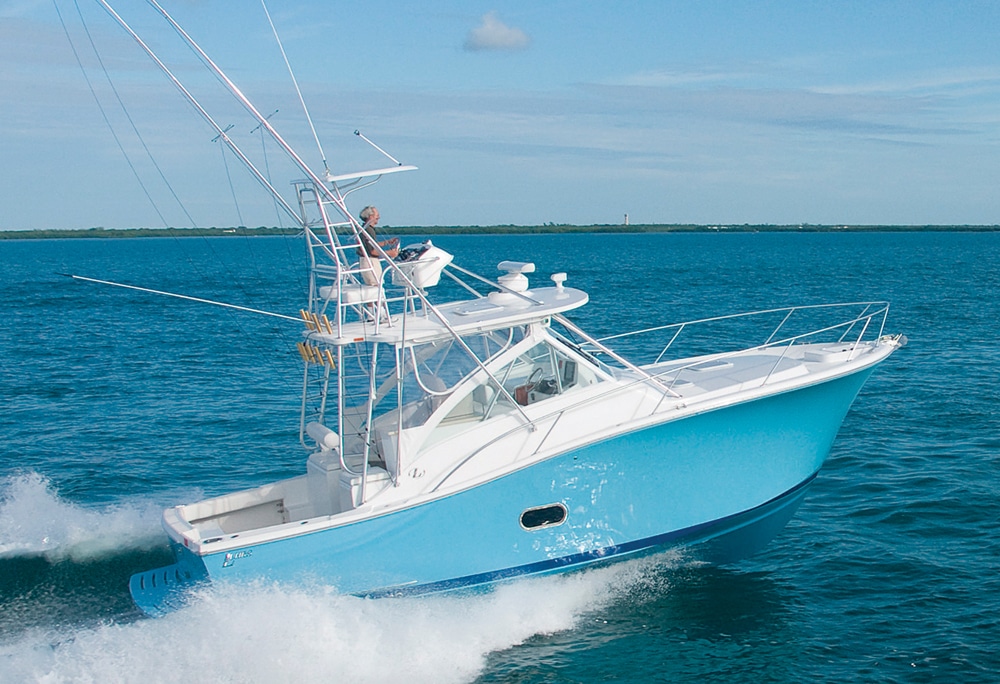
Luhrs 37 Canyon IPS
_****_When entering the salon aboard Luhrs 37 Canyon IPS, I was taken aback. This fish boat was bred for the treacherous Jersey inlets and long runs to the canyons. But before me was a two-stateroom, two-head cabin so thoroughly accommodating that, had it been magically dropped into a luxury cruiser, I’d not have blinked an eye. The 37 Canyon IPS balances the needs of angler and cruiser in an express format less than 40 feet long overall.
With a boat lacking sheer size, or the volume of a convertible, Luhrs accomplished express magic in several ways, including incorporating the principle of using the same space for two purposes. A great example of this is at the hinged foot of the forward berth. I flipped it open and revealed an aft-facing love seat. Combined with the corner chairs tucked between this seat and both the galley and salon settee, a crew of eight can sit and socialize with enough cabin sole remaining for the movable solid-plank table and some walking-around room.
Another example can be found in the salon head, where the shower is separate but privatized by a curtain instead of a stall. The arrangement is such that, whether I sat on the throne or stood at the vanity, there was plenty of elbowroom since neither abuts a rigid enclosure. The deep pan and a snap-secured curtain alleviate the worry about shower splash.
Another reason Luhrs was able to get so much livability out of such an ostensibly small envelope is the utilization of a very aggressive — some might say exaggerated — sheer line, and the increased freeboard that goes with it. That extra height provides headroom for the tackle and dive-tank room accessed through the companion bench on the helm deck (this space stows a tackle shop full of rods, spares and equipment, and there’s even a workbench) as well as stand-up access to the aft stateroom and the optional second head ($4,670) located there. Belay the order for the second head and you get another equipment room standard.
Aft staterooms and heads? Helm-accessed equipment rooms? Never mind headroom; how in hell do you get the space in the first place? Where are the engines?
The engines are aft, friends. And though you can fit the Canyon 37 with triple Yamaha F350 outboards ($424,740) if you’d like, my tester boasted IPS pods, installed in a unique way for this type of boat.
Typically, other pod-powered fish boats, like Albemarle’s 360XF ($499,995), jack-shaft the pod-drives to the engines in order to place the weight of the power plants low and centered — just as they’d be in a conventional inboard installation. Aboard the 37 Canyon IPS, the engines are close-coupled to the pods, allowing for a longitudinally compact installation that leaves room beneath the helm deck for accommodations. Is there a detriment in seakeeping or handling when compared with the more traditional engine placement? Luhrs says the Canyon 37 was designed for the setup, and it adjusted tank placement and other fixtures to keep all in balance.
My sea trial substantiated this claim. From the helm, docking the 37 Canyon IPS felt like it was spinning on an axis that ran right through my feet. On open water, it readily achieved plane without loss of visibility over the bow. On the drift, I noted neither excessive weathercocking nor an uncomfortable pitch. Both are characteristic flaws of some aft-engined boats, but not this one.
For docking or working an athletic game fish, the IPS joystick provides intuitive and precise control and allows for maneuvers, such as moving sideways, that just aren’t possible with levers. The cruising crowd has made joystick pods the status quo. Anglers have been slower to grant acceptance. Ten minutes at the helm of the Canyon 37 IPS would make a believer out of most.
Flipping open the hinged helm of the 37 Canyon IPS, I was met with wiring as neat and secure as a circuit board’s. Such easy access and care in rigging make for easy troubleshooting when your plotter goes “kerblooey” 80 miles from the beach. Turning aft with my butt on the wheel, I had a clear view of the entire cockpit and the transom corners. Working a double-header would be no problem (at least the boat wouldn’t be in my way).
Opposite is an L-lounge, another example of using the same space twice. Fold the backrest down on the forward-facing leg of the L, lift up the hinged seat, and revealed is the rigging center, with cutting board, sink, bulk drawers and tackle trays. This integration means the rigging station doesn’t intrude on the cockpit as a standalone unit would.
The cockpit proper, taped at 70 square feet, boasts a generous toekick and is fitted with a 35-gallon livewell, fresh- and raw-water washdown and a fish box big enough for a six-man limit. The transom door is secured by “big-boat” latches and leads to a generous swim platform — old-timers called it a “marlin board” — upon which a ladder is installed. Whether boating a bigeye or inviting a client for cocktails, the 37 Canyon IPS has you covered.
Comparable model: Albemarle 360XF
